Internet Before
Back in those days when we used to play counter-strike with our friends, we used to connect our devices using a private network called LAN.
The technicality of LAN: LAN is usually privately owned and connects some hosts in a single office, building, or campus. A LAN can be as simple as two PCs connected to play counter-strike, or it can extend throughout a company and include audio and video devices. Each host in a LAN has an identifier, an address, that uniquely defines the host in the LAN. A packet sent by a host to another host carries both the source host’s and the destination host’s addresses.
 A simple LAN
A simple LAN
Internet Today
Due to millions of people connecting everyday today's internet has become more complex and not strictly restricted to LAN technology. Nowadays there are WAN's that connect several LAN's together,a WAN has a wider geographical span, spanning a town, a state, a country, or even the world. There are two types of WAN's
- Point-to-Point WAN

- Switched WAN
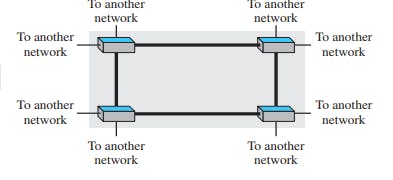
Two LAN's connected using point-to-point WAN
 So an internet is a switched network in which a switch connects at least two links together. A switch needs to forward data from a network to another network when required
So an internet is a switched network in which a switch connects at least two links together. A switch needs to forward data from a network to another network when required
Global Internet Today
The Global Internet is composed of thousands of interconnected networks,these have a hierarchy of how they connect ,
At the top level is the backbone networks which are owned by large communication companies such as Sprint,Verizon and NTT.They are called International Internet Service Providers (ISPs)
The provider networks are connected to backbones and sometimes to other provider networks.They are called national or regional Internet Service Providers (ISPs)
The customer networks are at the low level of the Internet that actually use the services provided by the Internet.

Network Model
Two models have been devised to define computer network operations: the TCP/IP protocol suite and the OSI model.
TCP/IP model
TCP/IP is a protocol suite (a set of protocols organized in different layers) used in the Internet today. It is a hierarchical protocol made up of interactive modules, each of which provides specific functionality.

Physical Layer
The physical layer is responsible for sending computer bits from one device to another along the network. It deals with the mechanical and electrical specifications of the interface and transmission medium. It defines the procedures that physical devices must follow to perform for successful transmission to occur. It concerns with
Physical characteristics of the interface between the devices and the transmission medium.
Representation of bits-It consists of a stream of bits that is of the form 0s and 1s, to be transmitted bits must be encoded into signals electrical or optical.
Data Rate and synchronization
Data Layer
The protocol used in this layer is Ethernet/Wi-Fi.
The protocol data unit in this layer is called Frames or User-Datagram.
The addressing mode used in this layer is MAC address.
The protocol most widely used to send data across individual links is called Ethernet. The routers are responsible for choosing the best links. However, when the next link to travel is determined by the router, the data-link layer is responsible for taking the Frame/User-datagram and moving it across the link. Ethernet uses MAC addresses to ensure that the data it sends has both an address for the machine that sent the transmission,as well as the one the transmission was intended for The link can be a wired LAN with a link-layer switch, a wireless LAN, a wired WAN, or a wireless WAN.
- Switch & Hub
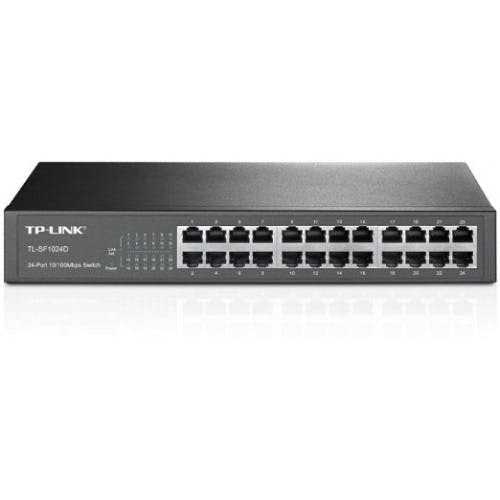
A switch is a Data Link device, which means a switch can inspect the consensus of ethernet (which is a Datalink physical device, which is not used nowadays due to wireless protocols)protocol data that can be sent around the network, determine which computer the data is intended for, and only send that data to that one system.
- Hubs & switches are the primary devices used to connect computers on a single network usually called LAN
Network layer
The protocol used in this layer is IP
The protocol data unit in this layer is called Datagram.
The addressing mode used in this layer is IP address.
- Router
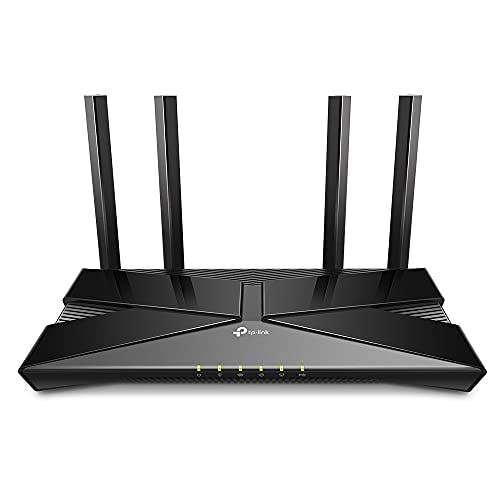
The network layer device used is called a router which serves two functionality that is
- Find the best possible route from one device(the source host) to another device(the destination host).
- Forward the packets from one router to the router until the destination network is reached. Router can inspect IP data to determine where to send things. Routers are the global guide for getting the traffic to the right places, the home router sends the data traffic to the ISP co-router where most of the traffic decision job is done.

Transport Layer
The protocols used in this layer is TCP/UDP
The protocol data unit in this layer is called Segmet.
The addressing mode used in this layer is Port number.
Transport layer gets the data data to be transmitted from the application layer. It allows traffic to be directed to specific network applications. Transport layer is important for many functions like reliable computer networking, These include multiplexing and de-multiplexing traffic, establishing long-running connections, and maintaining and ensuring data integrity through error checking and data verification.
Application Layer
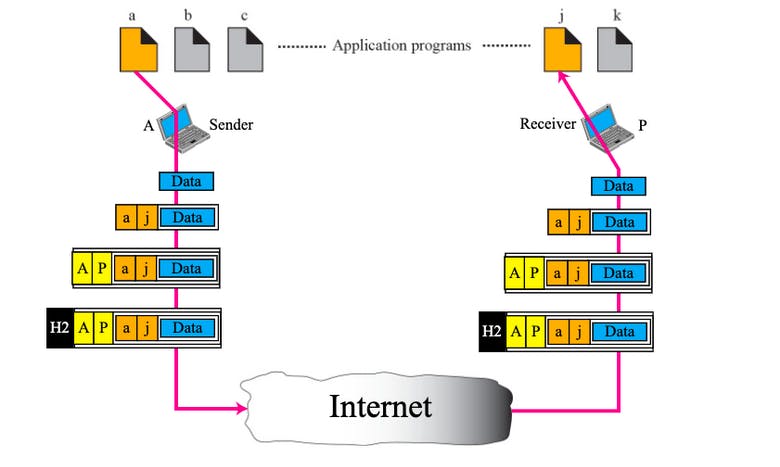
The protocols used in this layer is HTTP/FTP/SMTP...etc
The protocol data unit in this layer is called Messages.
Communication at the application layer is between two processes (two programs running at this layer).
• To communicate, a process sends a request to the other process and receives a response.
• Process-to-process communication is the duty of the application layer.
• The application layer in the Internet includes many predefined protocols, but a user can also create a pair of processes to be run at the two hosts.
OSI Model
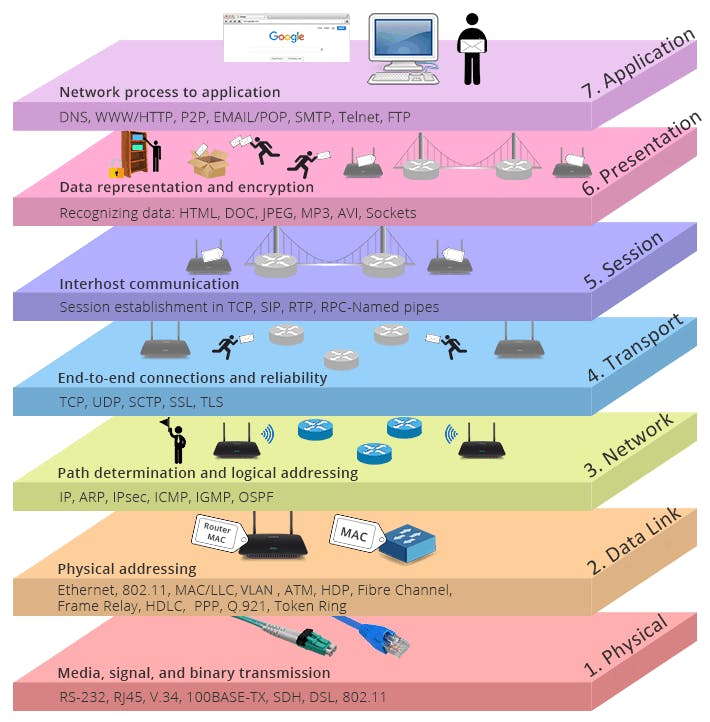
The purpose of the OSI model is to show how to facilitate communication between different systems without requiring changes to the logic of the underlying hardware and software.
• The OSI model is not a protocol; it is a model for understanding and designing a network architecture that is flexible, robust, and interoperable.
• The OSI model was intended to be the basis for the creation of the protocols in the OSI stack.
• The OSI model is a layered framework for the design of network systems that allows communication between all types of computer systems.
• It consists of seven separate but related layers, each of which defines a part of the process of moving information across a network .
